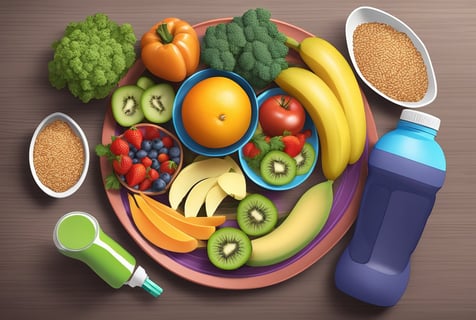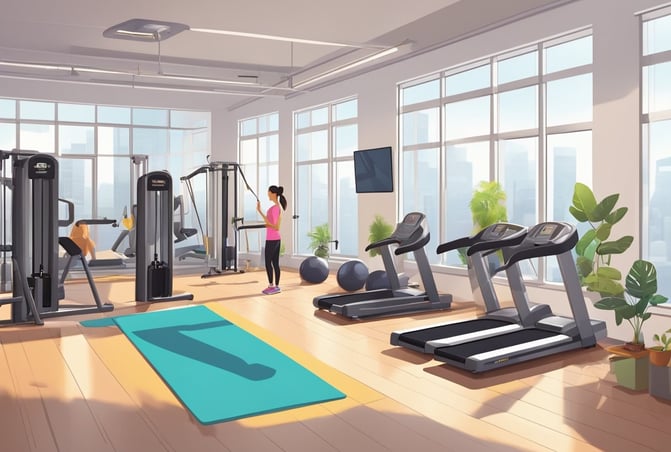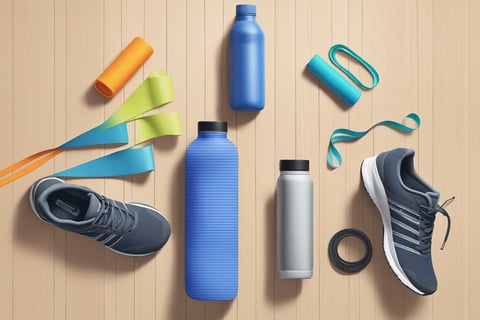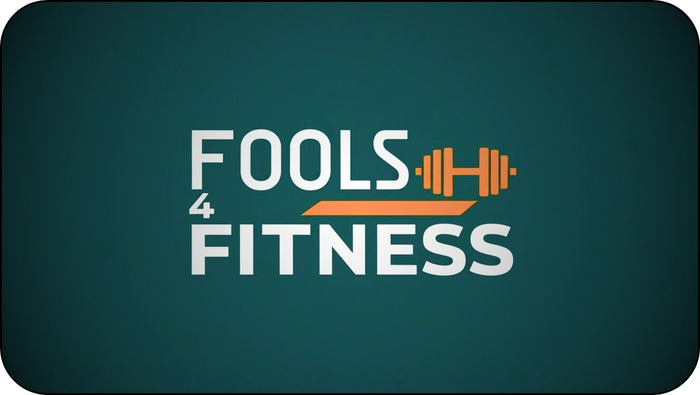Fitness for Beginners: How to Start Your Journey the Right Way - A Step-by-Step Guide to Building Healthy Habits
Starting a fitness journey might feel scary at first. Many people worry about doing exercises wrong or feeling out of place at the gym. We've all been there! The best way to begin is to start small with basic movements like walking, bodyweight exercises, and light resistance training.
2/10/20255 min read

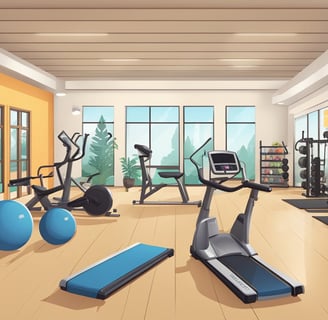
A good fitness routine fits into your life and matches your current abilities. Simple changes lead to lasting results.
Exercise brings more benefits than just looking better. Regular movement helps sleep, mood, and energy levels improve. These positive changes make it easier to stick with a new fitness habit.
Key Takeaways
Start with basic exercises and gradually increase difficulty as strength and confidence grow. It doesn't happen over night.
Create a simple workout schedule that fits into daily life without major disruptions.
Focus on proper form and consistent activity rather than quick results
Setting Realistic Goals
Setting specific and achievable fitness goals helps create a clear path forward and increases the chances of success in any fitness journey. Write down your goals and track your progress every time you go to the gym.
Understanding Your Motivations
People start fitness journeys for many different reasons. Some want to gain strength, while others aim to lose weight or improve their health.
Writing down specific reasons for starting helps maintain focus during challenging times. These reasons might include "playing with grandchildren without getting tired" or "hiking a mountain next summer."
A clear purpose makes it easier to stay committed when motivation starts to fade. Strong motivations act as anchors during the fitness journey.
Defining Achievable Targets
Start with small, measurable goals that can be reached within 4-8 weeks. Examples include:
Walking for 15 minutes, three times per week
Doing 5 push-ups without stopping
Drinking 6 glasses of water daily
Track progress using a simple fitness app or notebook. Numbers provide clear feedback about improvements.
Break larger goals into smaller steps. Instead of "run a marathon," start with "walk 1 mile without stopping."
Set deadlines for each goal. Having a time limit creates urgency and helps measure success.
Creating a Sustainable Routine
A fitness routine needs three key elements: consistent workout timing, smart scheduling, and diverse activities. These pieces work together to build habits that last.
Workout Frequency
Starting with 3-4 workouts per week gives your body time to adjust and recover. Space these sessions out evenly, like Monday, Wednesday, and Friday.
Begin with 30-minute sessions. This length is enough to see results but not so long that it feels overwhelming.
Rest days are just as important as workout days. They let muscles rebuild and prevent burnout.
Time Management
Pick a specific time each day for exercise. Morning workouts often work best because there are fewer scheduling conflicts.
Tips for sticking to your schedule:
Pack gym clothes the night before
Set a recurring alarm
Block off workout time in your calendar
Choose a gym close to home or work
Activity Variation
Mix different types of exercise to keep the routine fresh and work different muscle groups.
Sample Weekly Mix:
Day 1: Strength training
Day 2: Cardio
Day 3: Flexibility work
Day 4: Low-impact activities
Try new classes or exercises every few weeks. This prevents boredom and helps you find activities you truly enjoy.
Track your activities in a fitness app or journal. This helps you see patterns and stay motivated.
Nutrition Fundamentals
Good nutrition gives your body the fuel it needs to exercise effectively and recover properly. The right food and drink choices make a big difference in fitness results.
Balanced Diet Essentials
A balanced diet needs protein, carbohydrates, and healthy fats in the right amounts. Adults should aim for 0.8-1.0 grams of protein per kilogram of body weight daily.
Complex carbohydrates like whole grains, fruits, and vegetables provide steady energy throughout the day. They should make up 45-65% of total daily calories.
Healthy fats from foods like avocados, nuts, and olive oil help with vitamin absorption and hormone production. Fats should be 20-35% of daily calories.
Key nutrients to include daily:
Lean proteins: chicken, fish, eggs, beans
Complex carbs: brown rice, quinoa, sweet potatoes
Healthy fats: nuts, seeds, olive oil
Colorful vegetables and fruits
Hydration for Health
The body needs water for every function, including exercise performance and recovery. Most adults need 8-10 cups of water per day, with more during exercise.
Signs of good hydration:
Clear or light yellow urine
Regular bathroom visits
Moist lips and mouth
Normal energy levels
Sports drinks help replace electrolytes during intense workouts lasting over 60 minutes. Plain water works well for shorter exercise sessions.
Pre and Post-Workout Meals
Eat a mix of carbs and protein 2-3 hours before exercise. A banana with peanut butter or oatmeal with fruit provides good pre-workout energy.
Pre-workout snack options:
Greek yogurt with berries
Apple slices with nut butter
Whole grain toast with eggs
The post-workout meal matters most for muscle recovery. Eat within 30 minutes after exercise, combining protein and carbs.
Post-workout meal ideas:
Protein shake with fruit
Turkey sandwich on whole grain bread
Grilled chicken with brown rice
Understanding Fitness Principles
The success of any fitness journey depends on two key scientific principles that guide how our bodies respond to exercise and build strength over time.
Progressive Overload
Progressive overload means gradually increasing the demands placed on your body through exercise. This can include adding more weight, doing more repetitions, or extending workout duration.
A beginner might start by doing 5 bodyweight squats per set. After mastering proper form, they can increase to 8 squats, then 10, and eventually add weights.
Small, consistent increases work best. Aim to increase weights by 2-5% or add 1-2 reps each week when exercises feel too easy.
Specificity and Adaptation
Your body adapts to the exact type of exercise you perform. If you want stronger legs, focus on leg exercises. For better endurance, do cardio activities.
These changes happen at a cellular level. Muscles get stronger, bones become denser, and the heart grows more efficient at pumping blood.
The body needs 24-48 hours to adapt after strength training. This rest period allows muscles to repair and grow stronger.
For best results, match your exercises to your goals:
Strength: Heavy weights, low reps
Endurance: Light weights, high reps
Speed: Quick, explosive movements
Essential Gear and Equipment
Starting a fitness journey requires minimal but important equipment. The right shoes protect your feet and joints during exercise, while basic home workout tools let you build strength without an expensive gym membership.
Choosing the Right Footwear
Athletic shoes need to match your exercise type. Running shoes work best for jogging and cardio, while cross-trainers suit strength training and gym workouts.
Look for shoes with good arch support and cushioning that fits your foot shape. If you are looking for maximum arch support, and something that you can switch from multiple pairs of shoes, look into buying custom insoles. It's one of those "didn't know you needed it till you had it" kinds of things.
Replace athletic shoes every 300-500 miles of use or when the soles show visible wear patterns. Worn-out shoes can lead to foot pain and injury.
Cost-Effective Home Equipment
A yoga mat provides cushioning for floor exercises and stretching. It's an essential foundation for home workouts.
Basic Equipment List:
Resistance bands ($10-20)
2-3 pairs of dumbbells ($20-40)
Yoga mat ($15-30)
Jump rope ($10)
Start with lighter weights and add more as strength increases. 5-pound and 10-pound dumbbells work well for beginners.
Resistance bands offer versatile strength training options. They're lightweight, portable, and take up minimal space.




